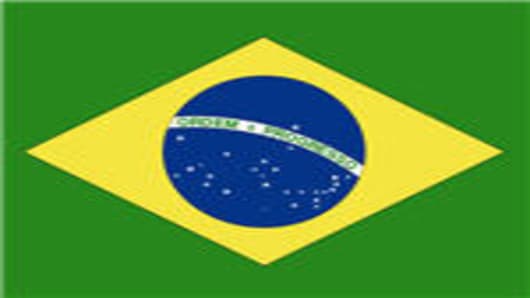As Latin’s America biggest economy, Brazil now stands as the world’s tenth largest economy in terms of GDP, with the International Monetary Fund forecasting $1.6 trillion in GDP growth for 2008, up 4.75%. Brazil’s real GDP has increased at an average of 4.25% from 2004 to 2007. The country's GDP growth is expected to remain above 4% through 2012 as Brazil continues to pioneer the energy, minerals, agricultural, and industrial sectors.
From 2006 to 2007, foreign direct investment in Brazil grew by 84%, standing at a record $34.6 billion, mostly helped by strong growth in the service and industrial production sectors. In April 2008, Standard & Poor’s upgraded Brazil’s long-term foreign-currency credit rating from BB+ to BBB- for the first time in the history of the country, potentially opening the door to further foreign investment in the country.
Brazil’s abundance in natural resources, has also propelled the country to become one of the world’s largest supplier of agricultural commodities such as soybeans, wheat, corn, sugar, coffee, and orange juice. Increasing global demand for some of these commodities could also trigger further economic growth in Brazil.
As home to the world’s second largest mining company, Companhia Vale do Rio Doce , Brazil is also well position to benefit from the demand for minerals, especially iron ore. Recent oil-reserve discoveries in the region, followed by the second biggest discovery of an oil reserve since the year 2000 by Brazil’s petroleum giant, Petroleo Brasileiro , could put Brazil on the map as one of the top ten world oil producers. Brazil has also pioneered the production of alternative fuels, with sugarcane ethanol and bagasse accounting for 46.4% of total renewable energy production. Ethanol accounts for 16% of Brazil's energy output. According to an energy report published on Biopact, bionergy has become Brazil's second largest source of energy.
Brazil’s major stock index, the Bovespa, has outperformed all major stock markets around the globe, rising by 13% year-to-date.
However, Brazil’s rising inflation – above 5 percent in April - and growing consumer demand, has led some economists to expect that Brazil’s central bank could raise interest rates to as much as 13.75% by the end of the year. On April 16, 2008, Brazil’s central bank hiked interest rates by 50 basis points to 11.75%.
The Brazilian real has appreciated 6.7% year-to-date against the greenback to 1.66 reals per dollar. According to The Economist, The United States is Brazil’s main trading partner, accounting for 21% of Brazil’s total exports, followed by 7.6% in Argentina, 6.1% in the Netherlands, and 5.6% in China in 2007.
The following table depicts the performance by sector of some of the Brazilian ADRs that are traded in the United States.



